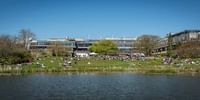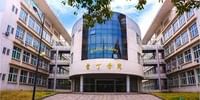- The potential outcome is to understand the physical mechanism(s) of slow earthquakes, and thus bridge the knowledge gap in understanding what controls the speed at which faults slip.
- Traditionally, major tectonic faults were thought to accommodate displacement by either slow, continuous creep, or episodic, potentially damaging earthquakes. This old paradigm of two end-member fault behaviours is now replaced by a new notion that fault slip velocities span a continuum from millimetres per year to metres per second (Peng and Gomberg, 2010).Ê
- The greatest range of slip behaviours is observed at the edges of the geodetically locked zone in subduction megathrusts, in episodic slow slip and tremor events. This PhD project aims to explore structures in ancient megathrust faults exhumed from depths where active slow slip and tremor occurs.
Doctor of Philosophy [Ph.D] (Earth and Ocean Sciences - the Geology of deep Slow Slip and Tremor)
42 months
English
Field of Study:
Important Dates
University allocates places on a first-come, first-served basis, so students are recommended to apply as early as possible.
| Event | End Date |
| Accommodation Deadline | Jul 31, 2022 |
Ask your question
Similar Colleges You Might Be Interested In
- Similar Colleges
No Ratings Found!!
Follow
No Ratings Found!!
Follow
No Ratings Found!!
Follow
No Ratings Found!!
Follow
No Ratings Found!!
Follow











